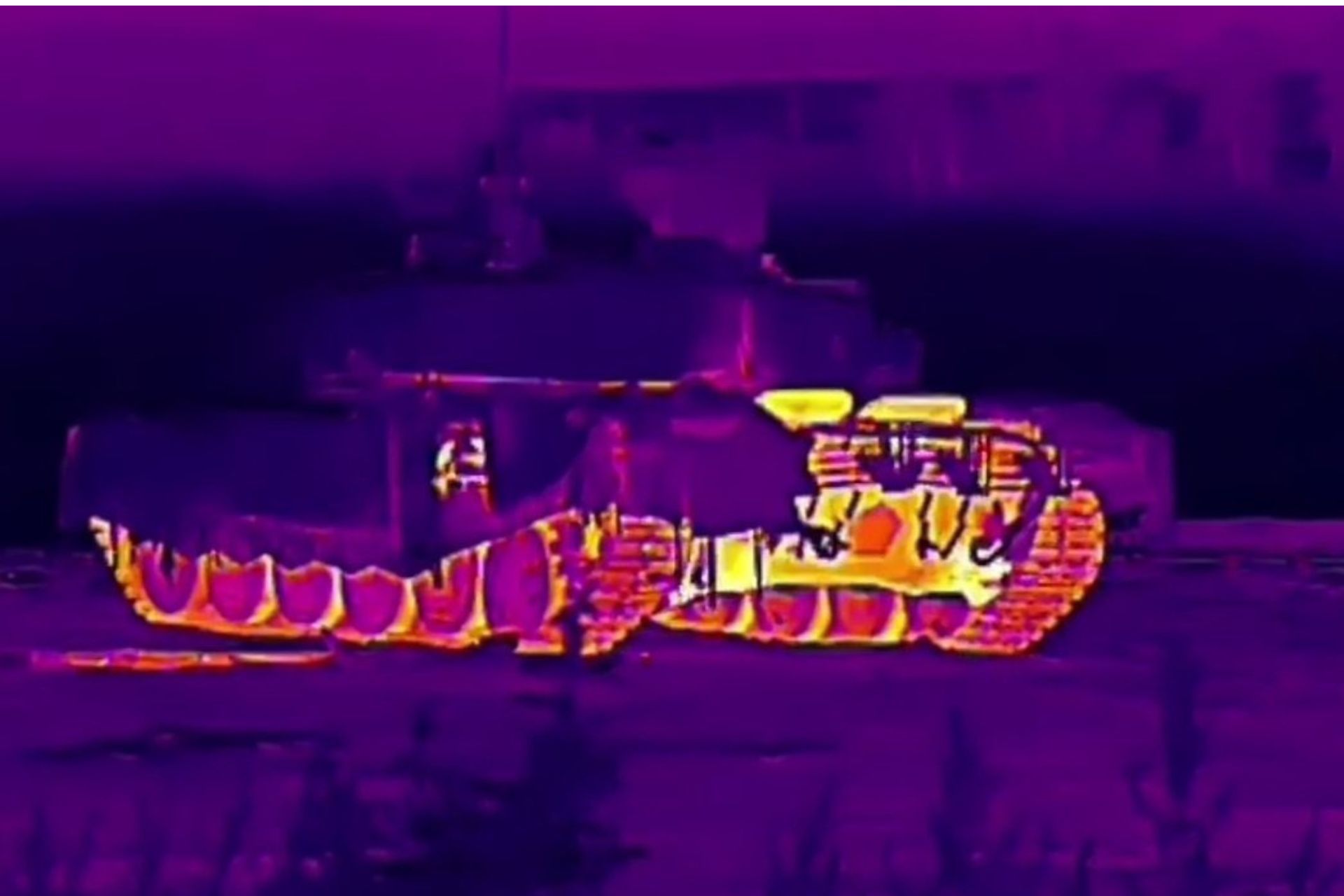Breaking News
Analysis: How Russia Enhances Tank Camouflage with Nakidka System.
In 2023, Russia announced the start of serial production of the Nakidka camouflage system, designed to significantly reduce the thermal and radar signatures of military vehicles, including the main battle tank T-90M. Developed by the "NII Stali" military research institute in Moscow, Nakidka, a radar-absorbing material (RAM), aims to enhance battlefield survival by making vehicles harder to detect with modern guided weapons. Follow Army Recognition on Google News at this link

In Ukraine, two T-90M "Proryv" tanks equipped with Nakidka were captured in the Kharkiv and Donetsk oblasts (Picture source: Ria Novosti)
First unveiled in 2006 at the Russian Expo Arms and International Defense Exhibition of Land Forces, Nakidka was initially showcased on a T-72BM "Rogatka". Since then, it has been incorporated into various Russian armored vehicles. The material includes an advanced mix of radio wave-absorbing and infrared-dampening materials that reduce detection by radar, infrared, and thermal imaging. Specifically, Nakidka is said to reduce radar detection ranges from 180 km to about 30-40 km, significantly decreasing the likelihood of being targeted by enemy forces.
Recent combat scenarios, including the ongoing conflict in Ukraine, have tested the effectiveness of Nakidka in real conditions. Notably, two T-90M "Proryv" tanks equipped with Nakidka were captured in the Kharkiv and Donetsk oblasts, highlighting both the usage and the challenges faced by such advanced technologies in active warfare. Despite its capabilities, incidents where these tanks were disabled by anti-tank guided missiles like the Javelin have shown that no defense measure is foolproof.
Camouflaging tanks on the battlefield presents complex but essential challenges to enhance the survivability of vehicles and the effectiveness of military operations. Tanks, although heavily armed and armored, are high-value targets whose destruction can significantly impact the outcome of a conflict. Effective camouflage of a tank reduces its visibility against a wide range of enemy detection technologies, including radars, infrared sensors, and optical systems. Reducing the visual, thermal, and radar signature of a tank can thus greatly decrease the likelihood of detection and attack, especially against precision-guided weapons that rely heavily on these technologies to locate their targets. Therefore, investing in advanced camouflage technologies and adaptive concealment techniques is crucial for maintaining combat effectiveness, not only to protect the crews but also to preserve strategic assets for the armed forces.

Thermal signature of the T-90M main battle tank when equipped with the Nakidka thermal camouflage (Picture source: X Channel @GarupanH)
This often starts with visual camouflage, where special paints and materials are used to break up the tank’s silhouette and blend it into its natural surroundings through various patterns. To reduce infrared detection, infrared-absorbing materials or paints are applied to decrease the thermal signature of the tank, making it less visible to thermal cameras and missile guidance systems.
Additionally, radar camouflage involves the use of materials that decrease the radar cross-section of the tank by deflecting or absorbing radar waves, while acoustic camouflage aims to minimize the sounds produced by the tank, making it difficult to detect by acoustic sensors. Cover and concealment utilize the natural environment, such as hills or buildings, to mask the tank, and camouflage nets add a layer of natural materials such as leaves or branches for better integration with the environment.
Multispectral signature reduction technologies, such as the Russian Nakidka system, are also crucial. This system reduces the thermal, radar, and infrared signature of the vehicle, offering protection against various detection threats. These combined techniques provide comprehensive defense, protecting tanks against modern detection and weapon systems, which is vital for maintaining operational effectiveness and vehicle survivability in combat.
Several countries have developed advanced camouflage systems for tanks and armored vehicles aimed at reducing their visibility across various detection spectrums. In the United States, the military uses the Ultra-Light Camouflage Netting System (ULCANS) designed by Fibrotex, which offers multispectral protection, shielding military assets from infrared and radar detection in various environments such as woods, snow, and desert.
In the UK, digital camouflage technologies have been experimented with, using complex patterns to effectively integrate tanks into their environment. Germany has also developed digital and multispectral camouflage systems for its tanks, focusing on patterns that disrupt visual, infrared, and radar signatures to effectively blend vehicles into various environments. In Sweden, Saab Barracuda has developed multispectral camouflage systems that reduce the visual, near-infrared, thermal infrared, and radar signatures of vehicles, thus enhancing their survivability on the battlefield. These systems illustrate a growing trend in military technology where the focus is on reducing the signature of vehicles across various detection methods to enhance their operational stealth and survivability in modern combat scenarios.


























